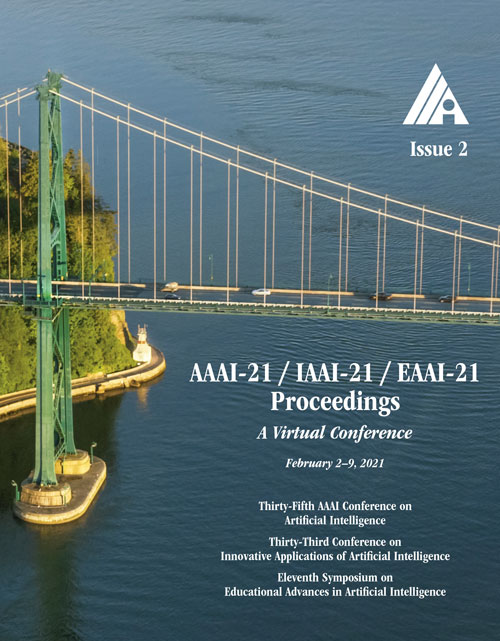Spherical Image Generation from a Single Image by Considering Scene Symmetry
DOI:
https://doi.org/10.1609/aaai.v35i2.16242Keywords:
Computational Photography, Image & Video Synthesis, Applications, Neural Generative Models & AutoencodersAbstract
Spherical images taken in all directions (360 degrees by 180 degrees) allow the full surroundings of a subject to be represented, providing an immersive experience to viewers. Generating a spherical image from a single normal-field-of-view (NFOV) image is convenient and expands the usage scenarios considerably without relying on a specific panoramic camera or images taken from multiple directions; however, achieving such images remains a challenging and unresolved problem. The primary challenge is controlling the high degree of freedom involved in generating a wide area that includes all directions of the desired spherical image. We focus on scene symmetry, which is a basic property of the global structure of spherical images, such as rotational symmetry, plane symmetry, and asymmetry. We propose a method for generating a spherical image from a single NFOV image and controlling the degree of freedom of the generated regions using the scene symmetry. To estimate and control the scene symmetry using both a circular shift and flip of the latent image features, we incorporate the intensity of the symmetry as a latent variable into conditional variational autoencoders. Our experiments show that the proposed method can generate various plausible spherical images controlled from symmetric to asymmetric, and can reduce the reconstruction errors of the generated images based on the estimated symmetry.Downloads
Published
2021-05-18
How to Cite
Hara, T., Mukuta, Y., & Harada, T. (2021). Spherical Image Generation from a Single Image by Considering Scene Symmetry. Proceedings of the AAAI Conference on Artificial Intelligence, 35(2), 1513-1521. https://doi.org/10.1609/aaai.v35i2.16242
Issue
Section
AAAI Technical Track on Computer Vision I

